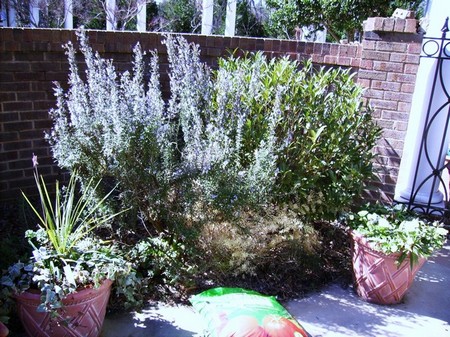Best Way to Sweeten Your Room with Herb Sachets, Bags, and Pillows
It used to be common practice to place sachets — small bags perfumed by herbs — between layers of clothes to give them a pleasing fragrance. Lavender-based mixtures have long been the most popular for this. Historically, sachets also served the more practical function of covering up musty smells or deterring insect attack. Southernwood, wormwood, and related artemisias, which contain the toxic oil thujone, were often included in moth-repelling mixes. Other herbs that can be used in bags as insect repellents include chamomile, mints, basil, feverfew, tansy, and sage.
Traditionally sachets and bags were made of scraps left over from dressmaking, so they could be squares, circles, or other shapes. Circles of a lightweight, pretty material such as organdie or calico around 25 cm (10 inches) diameter are the easiest to use as they require no stitching. They can simply be secured with a rubber band and a decorative ribbon, looped for hanging. For a small rectangular drawstring bag, cut two pieces of material 9 cm (3 1/2 inches) by 13 cm (5 inches). For a flatter sachet cut your cloth 13 cm (5 inches) square. In either case, place the wrong sides of the two pieces of material together and sew around three sides, using a 1.5 cm (1/2 inch) seam allowance. Fill with your chosen potpourri mix, then tie the top of the rectangular bag closed with a narrow ribbon. For the flatter sachet, sew up the final side by hand.
The hop-stuffed pillow was popularized as a sleeping aid by King George III. Herb pillows are still a pleasant alternative to sleep-inducing chemicals. Any pretty pillow or cushion cover, perhaps antique or home-made, can serve as the outer case for a pillow filled with hops or other herbs. Hop scent is not long-lasting, so it makes sense to design the pillow to make it easy to change the herb stuffing often. Enclose the herbs in an inner case made of a double thickness of cambric, muslin, or other tough lining material. For extra comfort enfold the herbs in a layer of 112 g (4 ounce) polyester batting, cut to fit inside the lining and sewn up on three sides. Fill with any preferred mix of dried herbs and potpourri flowers (avoiding anything too lumpy or hard) until comfortably firm, then hand-sew the remaining side. For sleep pillows, hops are the best choice, though you can also include other herbs with relaxing aromas, such as chamomile or lavender flowers or rose petals.
Categories
Advertisements
Recent Articles
 How to Understand Bed Sizes – A Small Guide
How to Understand Bed Sizes – A Small Guide How to Select Some Must Have Kitchen Accessories
How to Select Some Must Have Kitchen Accessories Best Way to Change a Car Tire
Best Way to Change a Car Tire Best Way to Write an Affirmation
Best Way to Write an Affirmation Best Way to Take Charge of Your Financial Life
Best Way to Take Charge of Your Financial Life Best Way to Survive a Party When You Don’t Know Anyone
Best Way to Survive a Party When You Don’t Know Anyone Best Way to Stop Self Sabotaging Yourself
Best Way to Stop Self Sabotaging Yourself Best Way to Start Journal Writing
Best Way to Start Journal Writing Best Way to Speak with a Powerful Voice
Best Way to Speak with a Powerful Voice Best Way to Simplify Your Life
Best Way to Simplify Your Life Best Way to Respond to a Put-Down
Best Way to Respond to a Put-Down Best Way to Reduce Acne Breakouts
Best Way to Reduce Acne Breakouts Best Way to Recover from Dining Disasters
Best Way to Recover from Dining Disasters Best Way to Quit Your Job Gracefully
Best Way to Quit Your Job Gracefully Best Way to Make Your Own Website
Best Way to Make Your Own Website


Leave a Reply